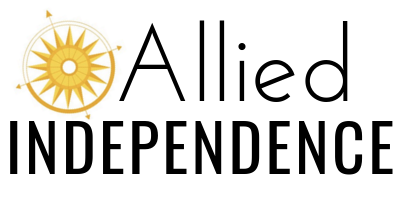145. The Challenges of Helping Teenagers with Visual Impairments Increase Their Orientation and Mobility Skills
Topics:
visual impairments, special education, orientation, mobility, specialists, teenagers, adolescence, challenges, independence, exploration, inclusivity, confidence, self-reliance, social interaction, skills, visually-impaired teenagers
When we think about the teenage years, we often picture a time of self-discovery, independence, and exploration. For teenagers with visual impairments, this journey comes with unique challenges. In a world that often takes sight for granted, it's easy to overlook the profound challenges faced by teenagers with visual impairments as they navigate the tumultuous journey of adolescence. It is here that the unsung heroes of the visually impaired community, the Orientation and Mobility specialists step in. In this blog post, we will explore the challenges faced by O&M specialists when helping teenagers with visual impairments increase their orientation and mobility skills.
Understanding the Unique Needs of Teenagers
The first and foremost challenge for O&M specialists is understanding the unique needs and aspirations of teenagers with visual impairments. Adolescents experience significant physical, emotional, and social changes, and these changes can be even more pronounced for those with visual impairments. Specialists must consider how these changes impact a teenager's willingness to learn and their motivation to improve their orientation and mobility skills.
The Teenage Challenge:
Teenagers with visual impairments face a unique set of challenges during adolescence:
Independence and Autonomy: Just like their sighted peers, teenagers with visual impairments crave independence. They desire the ability to explore their world and make decisions on their own. O&M specialists must support this need for independence while ensuring the safety of their students.
Social Interaction: Adolescence is a period of heightened social interaction and relationships. Navigating friendships, peer pressure, and social dynamics can be especially challenging for visually impaired teenagers, and O&M specialists often find themselves addressing these issues in their work.
Academic and Career Goals: Teenagers are also preparing for their future. O&M specialists need to help their students build skills that will serve them in their academic pursuits and, eventually, their careers.
Dealing with Resistance and Independence
Teenagers often crave independence and may resist the idea of relying on others, including O&M specialists. This resistance can pose a challenge in building a collaborative and productive relationship. O&M specialists must strike a balance between respecting the teenager's desire for independence and ensuring their safety while navigating the world.
Navigating Technological Advancements
Today, technology plays a pivotal role in the lives of teenagers, including those with visual impairments. While technological advancements have opened up new opportunities for orientation and mobility training, they also pose challenges in terms of access and adaptation. O&M specialists must stay updated on the latest assistive technologies and ensure that teenagers are proficient in using them effectively.
Ensuring Inclusivity in Educational Environments
Inclusive education is on the rise, and many teenagers with visual impairments now attend mainstream schools. O&M specialists need to work closely with schools to ensure that the physical environment, curricula, and teaching methods are accessible to their students. This can be a challenging task, as each school may have its unique set of constraints and resources.
Building Social Skills and Confidence
Navigating the world involves not just physical movement but also social interactions. O&M specialists must help teenagers with visual impairments build their social skills and self-confidence. This includes teaching them how to communicate their needs, interact with peers, and handle potentially challenging social situations.
Fostering Parental Involvement
Parental involvement is crucial in the success of orientation and mobility training for teenagers. O&M specialists often face the challenge of working with parents who may have limited knowledge of visual impairments and O&M techniques. Specialists must educate and involve parents in the training process to ensure a supportive home environment.
Adapting to Environmental Changes
Environmental changes, such as new construction or changes in traffic patterns, can pose unexpected challenges for O&M specialists and their teenage students. The specialists must adapt their training methods to account for these changes, ensuring that teenagers can confidently navigate evolving environments.
Cultural and Socioeconomic Considerations
O&M specialists must be sensitive to the cultural and socioeconomic backgrounds of their students. These factors can influence a teenager's access to resources and opportunities, which in turn affects their orientation and mobility skills. Specialists must consider these factors when developing training plans.
O&M specialists walk a fine line between encouraging independence and ensuring the safety and well-being of their teenage students. They must assess each student's unique needs and capabilities to provide the appropriate level of support. One of the primary goals of O&M specialists is to foster self-reliance in their students. They teach skills such as street crossings, using public transportation, and orientation techniques to promote self-sufficiency. These skills not only enhance the students' independence but also boost their confidence and self-esteem.
While the challenges are significant, the rewards are immeasurable. O&M specialists often witness remarkable growth in their teenage students. Many visually impaired teens overcome obstacles and go on to achieve incredible feats, from graduating high school and college to pursuing successful careers.
The challenges faced by Orientation and Mobility (O&M) specialists when assisting teenagers with visual impairments in enhancing their orientation and mobility skills are multifaceted and demanding. These professionals play a pivotal role in facilitating the transition to independence for these adolescents, a time when they are navigating physical, emotional, and social changes. Successfully addressing these challenges requires not only expertise in mobility techniques and adaptive technologies but also a deep understanding of the unique needs and aspirations of each individual student. O&M specialists must collaborate with schools and parents, embrace technological advancements, adapt to ever-changing environments, and promote inclusivity and self-confidence. Creating an inclusive world where everyone, regardless of their abilities, has equal opportunities is a shared responsibility.
